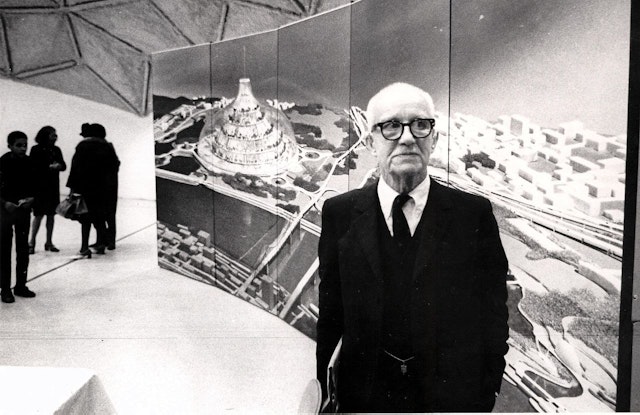‘Treat every project like it’s your last,’ says The Drum Awards jury president Brian Collins
As the chief creative officer looks forward to leading a jury of design experts through categories including brand identity, packaging and product design, we hear how he measures good work and why a brief can be a red herring.

Collins chief creative officer Brian Collins will be jury president at The Drum Awards this year and our new columnist
“History doesn’t repeat itself, but it often rhymes,” says Brian Collins, the chief creative officer of the design agency Collins, who is knowingly paraphrasing a reputed Mark Twain quote, elucidating on what designers should be doing in the near future to improve their work.
We find Collins typically fizzing with ideas and opinions when he speaks to us from his New York office (pictured below), just back from a client meeting in Orlando.
Explore frequently asked questions
“Every problem we face today has been solved, in some form, already,” he says. With this in mind, he advises any designer looking to the near future to always begin by learning the lessons of the past.
“Explore, read, watch and listen to the remarkable designers, artists, architects, individuals and societies who have left volumes, reels and records for us to learn from.
“Go hunting for patterns that match the stitching of the challenges you are facing. You’ll find them. When you do, they’ll tell you what to do with them.”

On September 4, Collins will lead a jury of agency and in-house design experts through categories including brand identity, packaging, product design and spatial design.
Anticipate the community you serve
One of the main things he’ll be looking for is designers’ ability to “anticipate” what the community they are serving and the world at large needs.
“Work that takes swings in that spirit is what I always have my eye out for,” says Collins, who believes that, at their best, designers help the world “imagine and rehearse more desirable futures.”
“As designers, we imagine, we peer around corners to see what might be and then we build bridges to it,” he adds.
Collins is keen to heed the warning that entrants should never be trying to impress judges, any more than they should be their peers or the public.
The true measure of good work for Collins is “how imaginatively and how expansively it answers the driving question that put that project on your desk in the first place.”
With this in mind, he advises: “Don’t worry about fitting your work to the crowd’s fickle shifting mood… but do be sure you treat each and every project like it may be your last. [That approach] will burn away any hesitancy, second-guessing or inclination to over-the-shoulder peering.”
Advertisement
Look beyond ‘the damn paper’ of a brief
Although the brief is the main basis of an understanding with a client, it doesn’t have to be the guiding light, according to Collins, who advises that briefs are “a client’s best articulation of the problems they face.”
It is up to designers to show ingenuity and commitment to understanding the nature of the challenge a client faces and to answer that, “not what the damn paper says,” argues Collins, for whom responding to a brief is not an exercise in “checking the boxes against a client’s PDF.”
He adds: “In judging, the work that always rises to the top strikes this balance like a gong. It is genuinely surprising and, at the same time, feels entirely inevitable.”
For Collins, success is not “nailing the brief” but rather showing that “you understand the real, often hidden nature of the problem your work is trying to address.”
Advertisement
‘Tacky’ trends should be avoided, but not in all cases
Judges can often be overwhelmed by trend-led work when it comes to awards and although Collins advises against following trends, he has a nuanced take on when they can be useful.
In his own work, trends might be variously avoided, pushed off from, dismantled or otherwise turned to a client’s advantage. “Occasionally, they can be leaned on successfully for short stints, so they have their uses. But most are passing fashion. Trends become tired and then, quickly, tacky.”
In terms of judging, Collins is always looking out for whatever it is that is appropriate for the problem above anything else. “Does the work fit and serve its purpose? If it delivers on this and it happens to be ‘on trend,’ that’s fine.”
He would rather this than designers shoe-horn in classic design tropes for the sake of it. A trend used well could be better than “some perfectly articulated ‘designed’ solution.” He warns: “Don’t bore us. Life is too short”.
While we’re looking forward to celebrating exceptional work through our awards, it’s important to remember the business value of design itself. We know that design is written into the DNA of some brands and absent from others (which is why they need help).
Collins is in no doubt that design should be considered “from the very, very, very start” of any project. He says simply: “Creative capital should be elevated to – or above – the status of financial capital. Creativity is an insane force multiplier in any business or organization.”
Suggested newsletters for you
Collins to join The Drum as a columnist

You’ll be hearing more from Collins, who will soon be a new columnist, contributing to the creative section of The Drum.
In the column, Collins will be trying to channel the ambition of American architect Buckminster Fuller (pictured above), who he recalls said, ‘“You never change things by fighting the existing reality. To change something, build a new model that makes the existing model obsolete.’”
The late Fuller was a futurist credited with popularizing the geodesic dome in architecture. The oldest surviving example is found in Woods Hole, Massachusetts, on Cape Cod, where Collins has a home.
“I see it every day when I’m there. That ambition will be the focus of what I write about.”
